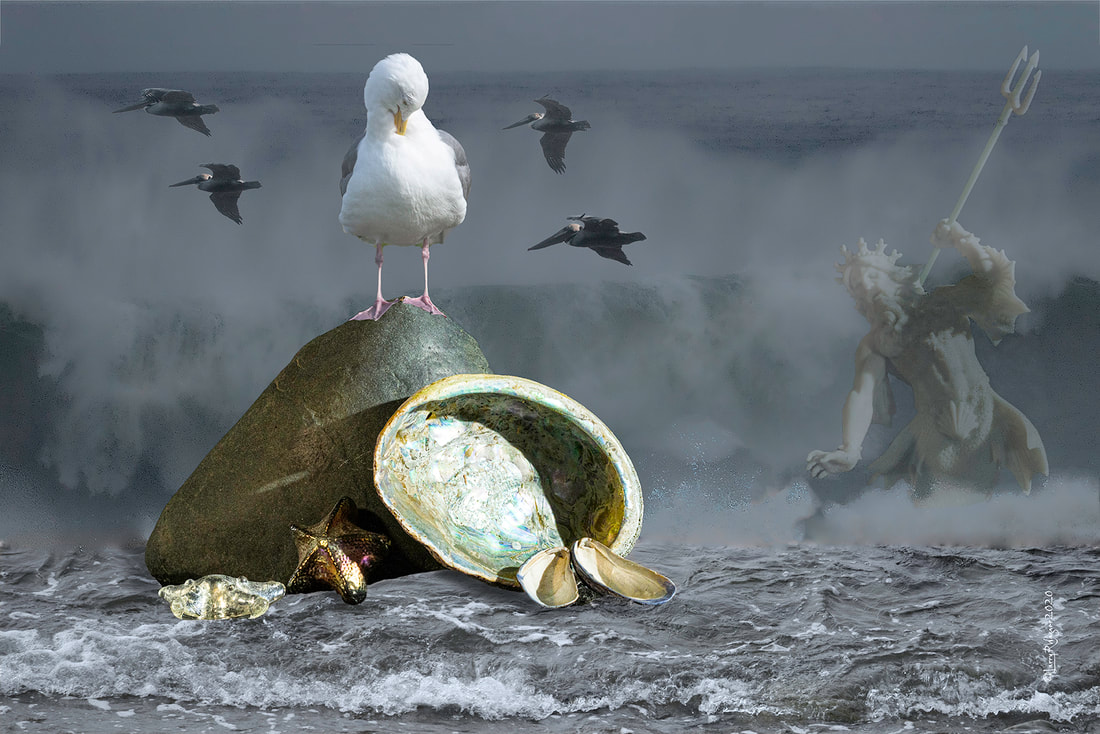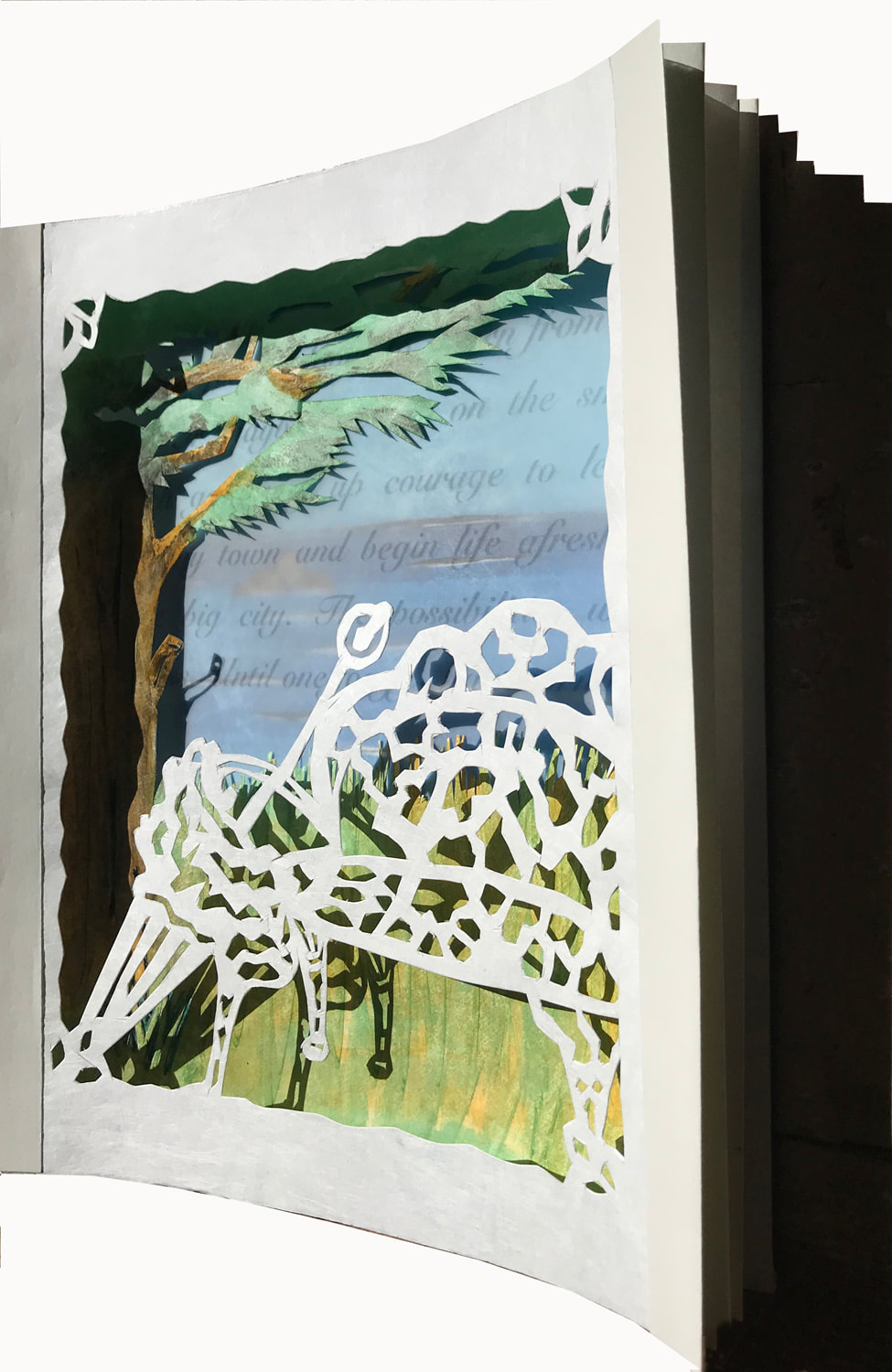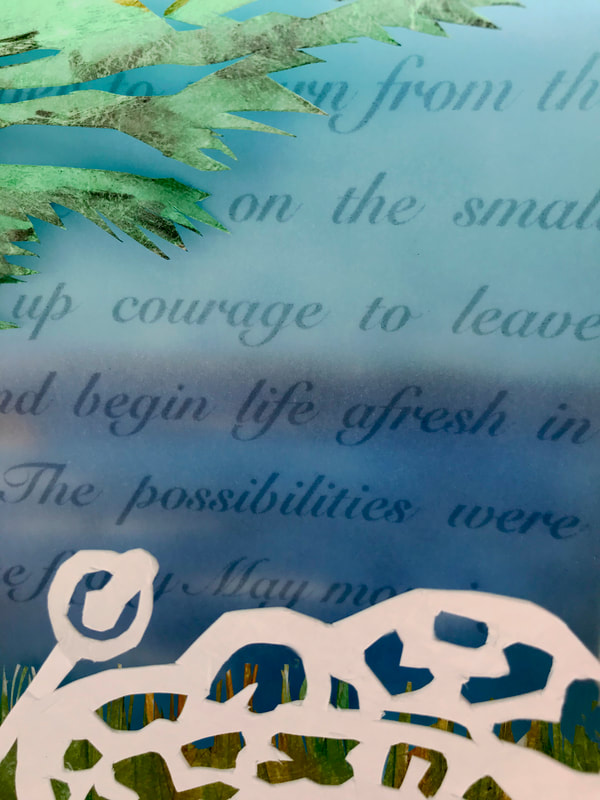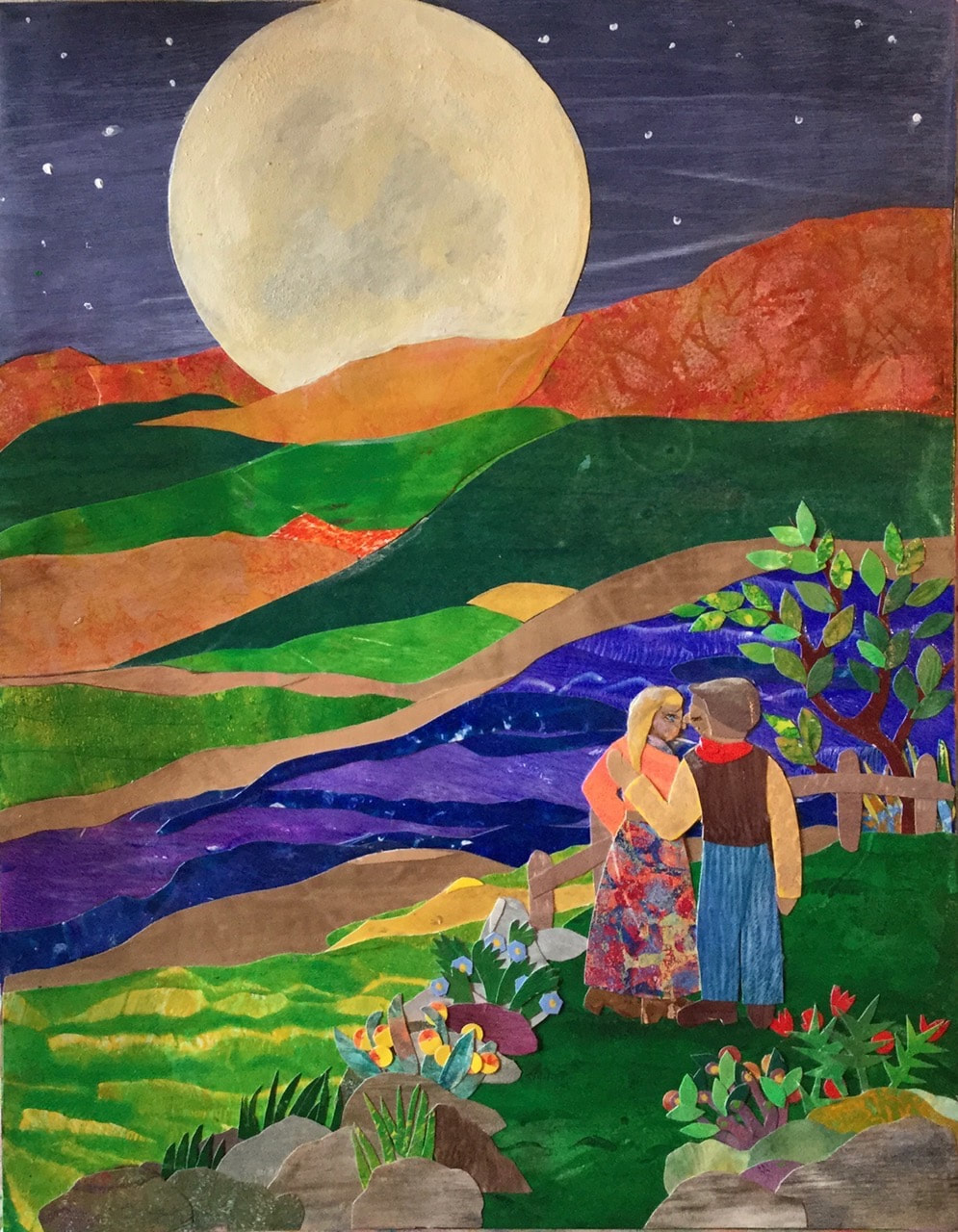Ekphrasis IX 2020 Virtual Exhibition
SET 6. Writer Initiators and their Visual Artist Responders, cont.
R. Intertidal Zone (Karen Lewis), High Tide, Nourished by Shell Song (Larry Wagner)
S. Portrait of a Lady (Nona Smith), Remembering (Mary-Ellen Campbell)
T. Where Poets Meet at the Oddist Hours (Notty Bumbo), A Perfect Moment (Shanti Benoit)
SET 6. Writer Initiators and their Visual Artist Responders, cont.
R. Intertidal Zone (Karen Lewis), High Tide, Nourished by Shell Song (Larry Wagner)
S. Portrait of a Lady (Nona Smith), Remembering (Mary-Ellen Campbell)
T. Where Poets Meet at the Oddist Hours (Notty Bumbo), A Perfect Moment (Shanti Benoit)
Intertidal Zone by Karen K. Lewis
|
Here, poems are born from jagged edges of old angers, forgotten storms. We wade barefoot at low tide, splashed by saltwater and the smoky scent of summer wildfire. Sand and kelp tumbles sea glass smooth. Whales migrate between hemispheres. I search for tangerine sea stars, daydream about ancestors, who gathered sacred feathers and painted sea caves, cleansed by high tide, nourished by shell song. |
Artist's Reflections (photo below): Karen Lewis's poem I found both beautiful and inspiring, especially because Marilyn and I live only 40 feet from the edge of the bluff with the sand and surf about 40' below. I love the ocean, spending hours watching the waves and bird life, mesmerized by its many moods. Karen's poem captured those feelings. Visualizing those feelings was a whole new adventure for me in creating photographic art. The biggest challenge was getting the lighting consistent so the components of what makes the ocean magical for me were harmonious. Larry R Wagner Writer's response to the art: Translating life at ocean's edge is a literary challenge. Where to begin? Where to end? Poetry mixes emotions with language. It's exciting for me to witness what photographer Larry Wagner discovers in my poem. Poetic imagery is cast into a new photographic—and mythic—melange, similar to the process whereby changing tides reveal hidden elements on the shore and in the heart. Karen Lewis |
High Tide Nourished by Shell Song: a response by Larry Wagner
Portrait of Lady by Nona Smith
|
Some called her Cassandra. Others named her Isabelle or Solange. Anyway, something other than the now-trendy uni-sex names like Taylor and Tyler and Mason. This was a lady, a very feminine entity. You could tell by her billowy skirt that ended at her shapely ankles and the upsweep of hair at the nape of her neck. Hair that disappeared into a wide-brimmed hat. She held a parasol with delicate fingers, elbows close to her erect body. Perched on a small wooden bench under a Cypress tree in someone’s front yard, she seemed to be waiting, Miss Havisham-like.
Or at least that’s how she appeared to me every time I drove through the tiny town of Manchester, perched itself on cliffs overlooking the Pacific Ocean, a bump in the road, unable to boast even a single gas station. The Cypress tree under which Cassandra––or Isabelle or Solange––sat was oddly pruned into the shape of a single-tiered wedding cake. Each time I passed her on the ribbon of highway that edged the ocean, I waved and called out, not expecting her to wave back. It just pleased me to greet her. I began creating backstories for this mysterious lady in waiting. I imagined she might be like the French Lieutenant’s Woman, waiting for her lover to return from the sea. Or maybe she sat on the small bench gathering up courage to leave this tiny town and begin life afresh in some big city. The possibilities were endless. Until one foggy May morning. That day, I drove through Manchester and passed the wedding cake tree, prepared to offer my usual greeting. But to my dismay, the space under the tree was empty. Cassandra––and her bench––were missing. Vanished. Disappeared. |
I made a quick U-turn to verify that she was indeed absent from her post.
Parking my car in front of the now-abandoned tree, I looked toward the house, a modest wooden structure with a wide porch. Flowerpots crowded with red geraniums stood on each step leading to the front door. I thought about climbing those stairs, knocking on the door and demanding to know what happened to Cassandra...or Isabelle or Solange. Why wasn’t she at her station? Had her beau finally returned and taken her away? Did she leave for the big city? Had she left a forwarding address? Instead, I sat in my car staring at the strangely shaped tree and the house beyond it. After a while, I drove on in mourning. Weeks later, I learned from a real estate agent friend that the house had been sold. No, he didn’t know any details about where the people went or what happened to the statue of the lovely woman who sat under the Cypress tree. Time has passed and I’ve managed to console myself somewhat with fantasies of her life in a bigger environment than Manchester. Maybe she’ll meet a new beau who won’t keep her waiting, someone charming like Mr. Darcy. Perhaps she’s gone somewhere she can let her hair down a bit, tuck her skirt between her knees like Pippi Longstockings and do a few cartwheels. A place where she can meet a larger circle of friends who might call her Cassie or Izzy or Sol. |
Remembering. The response by Mary-Ellen Campbell, tunnel book, NFS
Bookartist's Comments:
I created a tunnel book as artwork for my story because of the connection of book with writing and art. The book has four connected layers portraying the past and present as Cassandra leaves her wonderful view of the coast in the fog and her Victorian parasol and Victorian lifestyle. I place the observer behind the bench so they can see the protagonist's viewpoint. Through the fog we read her wishes. Cut paper seemed an appropriate medium for the lacy Victorian props and layering of words, and the painted image creates the fog in the coastal setting. Mary-Ellen Campbell
I created a tunnel book as artwork for my story because of the connection of book with writing and art. The book has four connected layers portraying the past and present as Cassandra leaves her wonderful view of the coast in the fog and her Victorian parasol and Victorian lifestyle. I place the observer behind the bench so they can see the protagonist's viewpoint. Through the fog we read her wishes. Cut paper seemed an appropriate medium for the lacy Victorian props and layering of words, and the painted image creates the fog in the coastal setting. Mary-Ellen Campbell
|
Where Poets Meet at the Oddest Hours by Notty Bumbo We walked for some time by the river,
Stars just beginning to light. The insects were holding a concert, And the birds slowly fading to sleep. I turned to you, Or you turned to me, And said something deliciously deep. How I remember that moment, To be witness to such heights of the mind, And know in those brief minutes How the heart can contain great delights! One spoke and the other one listened, Then shifted our roles with sweet ease, Watching the moon strut its light. If ever I get back to Eire’, I’ll return to that river again. Walk there in day or in deepening shadows, Wishing your sudden return. And later maybe stop for a pint By that little white tavern we found, Close by the fair River Erne. |
A Perfect Moment by responding artist Shanti Benoit hand crafted paper collage. 14x11. $225. |




